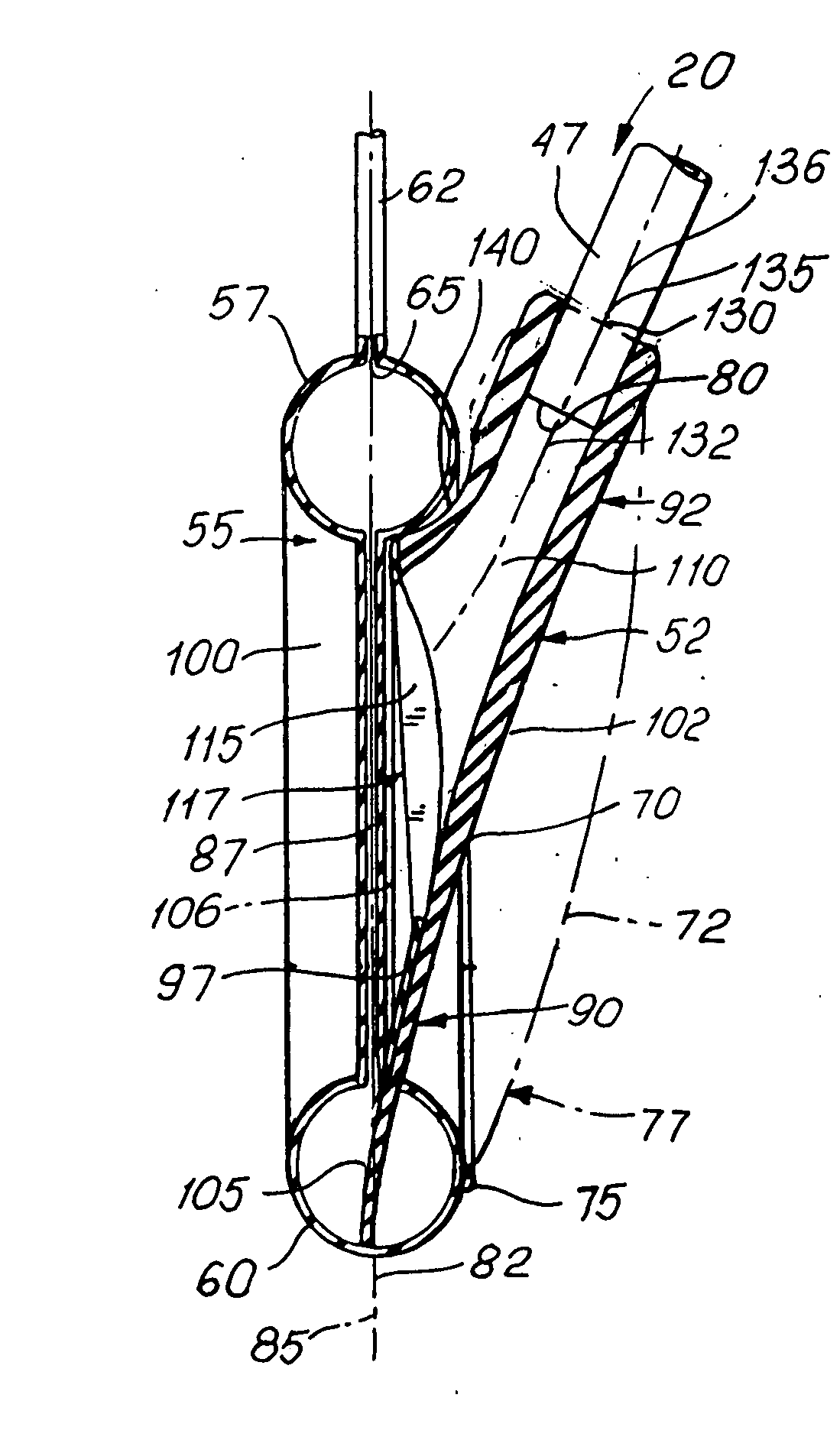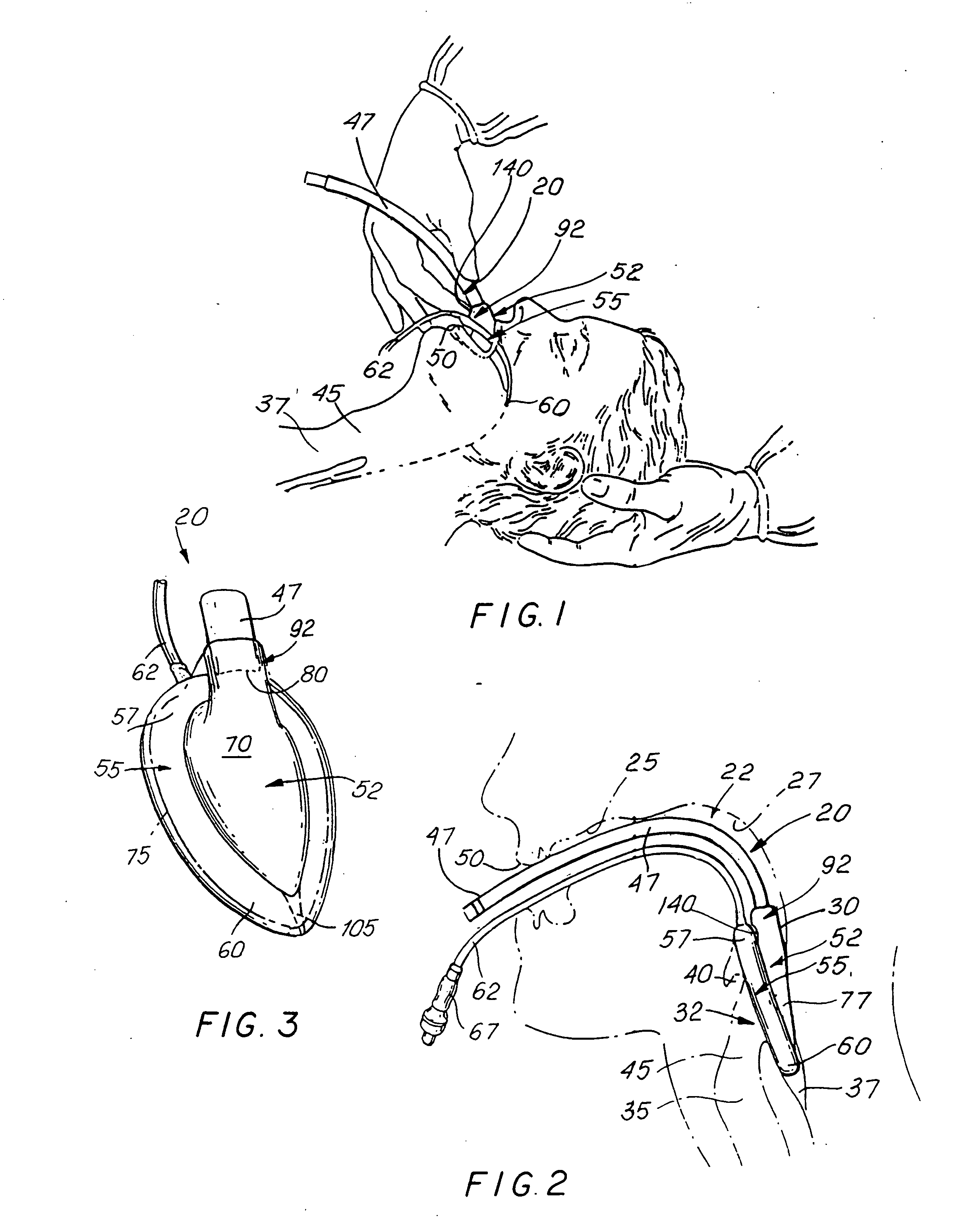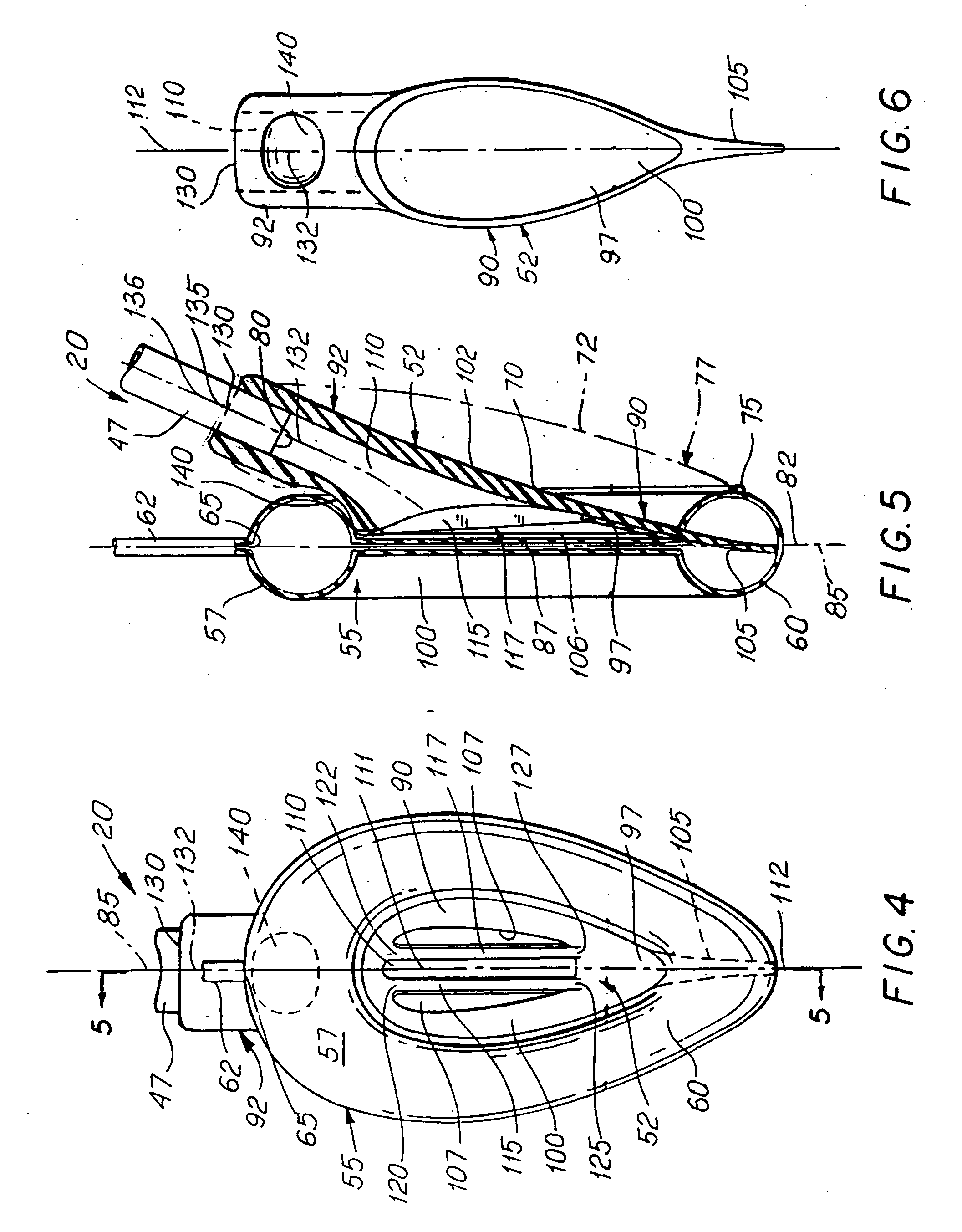Laryngeal mask airway device
a technology of airway device and laryngeal mask, which is applied in the direction of medical devices, respiratory apparatus, other medical devices, etc., can solve the problems of substantially self-inserting of lma devices when properly deflated, and achieve the effect of reducing the likelihood of any hard or angular edges, reducing the likelihood of any prontory edge, and being convenient to defla
- Summary
- Abstract
- Description
- Claims
- Application Information
AI Technical Summary
Benefits of technology
Problems solved by technology
Method used
Image
Examples
Embodiment Construction
[0027] As used herein, the anatomical terms “anterior” and “posterior”, with respect to the human body, refer to locations nearer to the front of and to the back of the body, respectively, relative to other locations. The term “anterior-posterior (A-P)” refers to a direction, orientation or the like pointing either anteriorly or posteriorly. The anatomical terms “proximal” and “distal”, with respect to applying an instrument to the human body, refer to locations nearer to the operator and to the inside of the body, respectively. Alternatively, “distal”, as opposed to “proximal”, means further away from a given point; in this case, “distal” is used to refer to positions on the LMA-device 20 or in the body relative to the extreme outer or connector end of the LMA-device. “Proximal” is the opposite of “distal”. The term “lateral” refers to a location to the right or left sides of the body, relative to other locations. Alternatively, “lateral” means to one or other side of the mid-line,...
PUM
 Login to View More
Login to View More Abstract
Description
Claims
Application Information
 Login to View More
Login to View More - R&D
- Intellectual Property
- Life Sciences
- Materials
- Tech Scout
- Unparalleled Data Quality
- Higher Quality Content
- 60% Fewer Hallucinations
Browse by: Latest US Patents, China's latest patents, Technical Efficacy Thesaurus, Application Domain, Technology Topic, Popular Technical Reports.
© 2025 PatSnap. All rights reserved.Legal|Privacy policy|Modern Slavery Act Transparency Statement|Sitemap|About US| Contact US: help@patsnap.com



